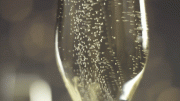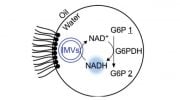
The origin of life remains a scientific enigma, with research divided between “bottom-up” methods, which simulate early Earth environments, and “top-down” methods that use evolutionary biology to trace back life forms. A recent interdisciplinary article suggests bridging these methodologies by studying electron transport chains, a universal metabolic system, offering insights into life’s earliest metabolic strategies and origin.
Despite years of advancements, the origin of life continues to be one of science’s most enduring mysteries.
“The most basic features of biology, that organisms are made of cells, that they pass genetic information through DNA, that they use protein enzymes to run their metabolism, all emerged through specific processes in very early evolutionary history,” says Aaron Goldman, Associate Professor of Biology at Oberlin College. “Understanding how these most basic biological systems first took shape will not only give us greater insight into how life works at the most fundamental level, but what life actually is in the first place and how we might look for it beyond Earth.”
The question of how life first emerged is typically studied through laboratory experiments that simulate early Earth environments and look for chemistries that can create the same kinds of biomolecules and metabolic reactions that we see in organisms today. This is known as a “bottom-up” approach since it works with materials that would have been present on the prebiotic Earth.
While these so-called “prebiotic chemistry” experiments have successfully demonstrated how life may have originated, they cannot tell us how life actually did originate. Meanwhile, other research uses techniques from evolutionary biology to reconstruct what early life forms might have looked like based on data from life today. This is known as the “top-down” approach and can tell us about life’s history on Earth.
Top-down research, however, can only look as far back as there were genes that are still conserved in organisms today, and therefore not all the way to the origin of life. Despite their limitations, top-down and bottom-up research are aiming at the common goal of discovering life’s origins, and ideally, their answers should converge on a common set of conditions.
A new article published by Goldman, Laurie Barge (Research Scientist in Astrobiology at NASA’s Jet Propulsion Laboratory (JPL)), and colleagues, attempts to bridge this methodological gap. The authors argue that combining bottom-up laboratory research on plausible pathways toward an origin of life with top-down evolutionary reconstructions of early life forms can be used to discover how life truly did originate on the early Earth.
In their paper, the authors describe one phenomenon central to life today that could be studied by combining both bottom-up and top-down research: electron transport chains.
Electron transport chains are a type of metabolic system that is used by organisms across the tree of life, from bacteria to humans, to produce usable forms of chemical energy. The many different types of electron transport chains are specialized to each form of life and the energy metabolism they use: for example, our mitochondria contain an electron transport chain linked to our heterotrophic (food-consuming) energy metabolism; whereas plants have a wholly different electron transport chain linked to photosynthesis (the generation of energy from sunlight).
And across the microbial world, organisms use a broad range of electron transport chains linked to a variety of different energy metabolisms. But, despite these differences, the authors describe evidence from top-down research that this kind of metabolic strategy was used by the very earliest life forms and they present several models for ancestral electron transport chains that could date back to very early evolutionary history.
They also survey current bottom-up evidence suggesting that even before the emergence of life as we know it, electron transport chain-like chemistry could have been facilitated by minerals and early Earth ocean water. Inspired by these observations, the authors outline future research strategies that synthesize top-down and bottom-up research on the earliest history of electron transport chains in order to gain a better understanding of ancient energy metabolism and the origin of life more broadly.
This study is the culmination of five years of previous work by this multi-institute interdisciplinary team led by Barge at JPL, which was funded by the NASA-NSF Ideas Lab for the Origins of Life to study how metabolic reactions could have emerged in geological settings on the early Earth. Previous work by the team has investigated, for example, specific electron transport chain reactions driven by minerals (led by Jessica Weber, JPL Research Scientist); how ancient enzymes may have incorporated prebiotic chemistry in their active sites (led by Goldman); and microbial metabolism in extremely energy-limited environments (led by Doug LaRowe, at the University of Southern California).
“The emergence of metabolism is an interdisciplinary question and so we need an interdisciplinary team to study this,” says Barge. “Our work has utilized techniques from chemistry, geology, biology, and computational modeling, to combine these top-down and bottom-up approaches, and this kind of collaboration will be important for future studies of prebiotic metabolic pathways.”
Reference: “Electron transport chains as a window into the earliest stages of evolution” by Aaron D. Goldman, Jessica M. Weber, Douglas E. LaRowe and Laura M. Barge, 14 August 2023, Proceedings of the National Academy of Sciences.
DOI: 10.1073/pnas.2210924120
The study was funded by the National Aeronautics and Space Administration.









I would love to make some comments.
First upstand my goal in comments. The goal is an exercise of the mind. A type of brainstorming. As I remember the class was called olympics of the mind. For now this is all. An introduction of myself. Hopefully in the near future I can comment and get your brain waves flowing. Truly I have a different perspective. So let’s put my perspective together with your knowledge and see what happens.
Their approach cannot overlook the fact that life had to begin with basic organic compounds…amino acids. Those amino acids must combine with one another to form peptides and nucleotides leading to polypeptides and oligonucleotides. Eventually nucleic acids and proteins. These reactions require the input of heat energy and the removal of water. This process cannot take place in the oceans of the primitive Earth, but might work in shallow ponds where sequential warming and cooling, wetting and drying could lead to chain-lengthening. What happens after that is a separate issue.
Why would random chance throw out a mix that would eventually start up a living human being who for all purposes could out calculate “chance” itself . We place odds on this so call chance . You can work on this in the lab all you want but if there is any interference at the smallest scale to produce life you are bound to concede it was caused by intelligence. No way around it
I do hope that readers here will have also read the original journal article being discussed;
“Electron transport chains as a window into the earliest stages of evolution” by Aaron D. Goldman, Jessica M. Weber, Douglas E. LaRowe and Laura M. Barge, 14 August 2023, Proceedings of the National Academy of Sciences.
DOI: 10.1073/pnas.2210924120
https://www.pnas.org/doi/10.1073/pnas.2210924120
The first thing I like to check is the bibliography. It the authors have skipped, or missed key studies I must wonder why. Goldman, et al missed any mention of Jack Szostak, and the large literature on the Isua Peninsula geochemistry.
Regarding the note by Ken Towe, the original PNAS article does review various physical settings proposed as geological abiogenesis “labs.”
I fear that cosmic “life” invented DNA/RNA once and only once, and it was on Earth.
Why instead of wasting money on useless studies don’t you get a free Bible copy and find the answer to your query
Laser light destroyed Covid in the
Glas Water from bottom. Use Laser Diode 5mV 650nm Red http//adafru.it/1054 P1054 C1167-002 my Work Invention.
This article may be abused and misquoted by creationists, including the intelligent design creationists at the Dishonesty Institute is Seattle.
The whole concept of a cell creating all life on Earth seems beyond absurd to me
The mitochondria can not function if one part is missing. It has to come in existence as a whole to function, same with eyes. An eye can’t function as an eye unless all parts are working together at once.